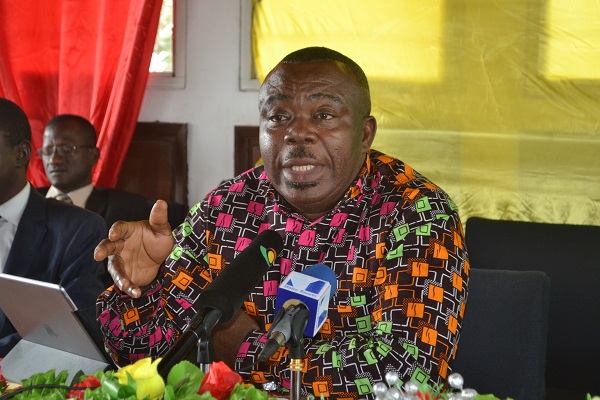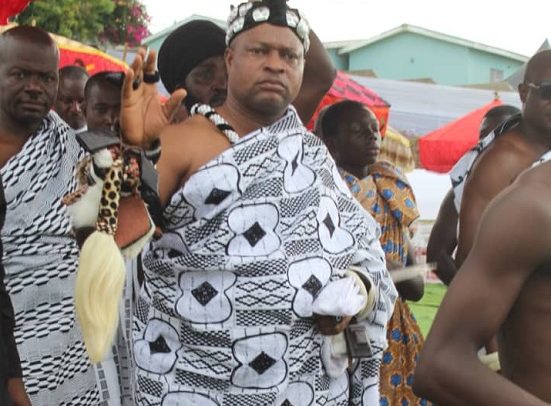
By Constance Gbedzo
His Excellency, John Evans Atta Mills served as the President of Ghana from January 2009 until his passing in July 2012. His presidency was guided by the “Better Ghana Agenda,” a socioeconomic policy vision aimed at improving the living standards of Ghanaians, promoting good governance, and ensuring equitable development.
The “Better Ghana Agenda” was President Mills’s flagship policy framework, which he campaigned on in the 2008 elections. This agenda focused on broad areas, driven by a social democratic philosophy:
Economic Performance
President Mills’s tenure is largely remembered for its positive macroeconomic performance, particularly in the initial years. The macroeconomic performance during his tenure was generally characterized by strong economic growth, a reduction in the budget deficit, and a significant drop in inflation.

Real GDP growth saw a remarkable increase, rising from 4.0% in 2009 to a peak of 13.6% to 14.4% in 2011, making Ghana one of the world’s fastest-growing economies that year. This high growth rate in 2011 was largely driven by the commencement of commercial oil production in late 2010 from the offshore Jubilee field. During his tenure specifically in 2010 following a GDP rebasing exercise, Ghana officially transitioned to a Lower Middle-Income Country (LMIC) status.
One of his major achievements was the sustained reduction of inflation, moving from 17.7% at the end of 2009 to reaching a single-digit figure of about 8.6% (or 8.4%) by the end of 2011, a level not seen consistently in Ghana for decades.
Also, his government focused on fiscal consolidation, which led to a notable reduction in the Fiscal Deficit as a % of GDP. It reportedly dropped from a high of around 14.5% of GDP in 2008 (before his tenure began) to about 10.3% in 2009, and further reduced to a figure ranging from 5.3% down to 2.0% by the end of his term, depending on the data source and calculation basis; oil vs. non-oil GDP.
Nonetheless, the Gross Public Debt as a percentage of GDP saw some fluctuation and was subject to rebasing effects. Available figures show it had increased from 70.2% in 2009 to 71.6% in 2010, but then appeared to be contained around 48% to 56% in subsequent years, though the total debt stock continued to rise in absolute terms.
Key macroeconomic numbers for this period include:
| Indicator | 2009 | 2010 | 2011 | 2012 (End-Year/Estimate) |
| Real GDP Growth (%) | 4.0 | 7.7 | 13.6-4.4 (Peak) | ?8.0 (Projected) |
| Headline Inflation (Year-End %) | 17.7 | 10.1 | 8.6-9.3 | 9.4 (June 2012) |
| Fiscal Deficit (% of GDP) | (10.3) | (6.7) | (5.3)-(4.3)
(Non-Oil GDP) |
(5.3)-(2.0)
(Range of reported figures) |
| Gross Public Debt (% of GDP) | 70.2 | 71.6 | ?47.8-55.9 | ?48.4 |
President Atta Mills’s time in office was characterized by significant economic achievements, ushering Ghana into a period of high growth and low inflation, primarily driven by prudent fiscal management and the commencement of oil production. Ghana’s cocoa sector achieved a historic milestone, reaching 1.0 million metric tonnes of production for the first time.
His government established the Ghana Revenue Authority (GRA) to improve efficiency in revenue collection.
However, his legacy is also complicated by the failure to contain high-profile corruption scandals and challenges in translating the economic growth into broadly felt improvements in living standards for all Ghanaians, despite a strong commitment to social welfare through the “Better Ghana Agenda.
Under the “Better Ghana Agenda,” Professor Mills’ Administration made significant investments in infrastructure, particularly focusing on addressing deficits in the education, health, and road sectors.Prof Mills’s administration prioritized improving health infrastructure to enhance healthcare delivery and accessibility. There was a focus on reactivating and completing abandoned health projects, alongside the initiation of new ones. In Accra-Tema Metropolis, projects like the Usher Polyclinic
Theatre, Maternity Block at Achimota Hospital were reactivated and completed. Maamobi, Kaneshie, and Mamprobi Polyclinics were upgraded. Preparatory and construction works began for the major rehabilitation and upgrading of Tamale Teaching Hospital and securing funds for the expansion of Radiotherapy and Nuclear Medicine at Korle Bu Teaching Hospital (KBTH) and Komfo Anokye Teaching Hospital (KATH). Projects were launched to install new equipment like MRI at the 37 Military Hospital and improve the efficiency of the National Ambulance Service (NAS), aiming to expand its stations across the country.
Regarding roads, the government continued existing projects and initiated new road networks to improve connectivity and address urban congestion. Work was pursued on several critical inter-regional road corridors. The Awoshie-Pokuase Road and Community Development Project was a significant project in the Greater Accra Region; constructing a 15 km road and including associated community-upgrading infrastructure like drainage and ancillary facilities to tackle traffic congestion and urban development challenges.
Work continued to fast-track the West Africa Transport and Transit project (improving sections of the Central Corridor), the Eastern Corridor project (improving Tema-Yendi-Tamale links), and to continue with the entire Western Corridor Project. Continuation of the Urban Transport project aimed at providing mass transit facilities and improving the management of urban road transport services in metropolitan areas.
On industries, the primary industrial projects and achievements of President John Atta Mills were centered on the Oil and Gas Sector and policies aimed at bolstering local industries. The most significant industrial milestone was the commencement of commercial oil production in Ghana. While the oil discovery was made under the previous administration, President Mills’ government presided over the critical phases of development and the start of extraction.
On December 15, 2010, President Atta Mills commissioned the First Oil from the deepwater Jubilee Field, a historic event that marked Ghana’s entry into the ranks of oil-producing nations. The project utilized the FPSO (Floating, Production, Storage, and Offloading) Kwame Nkrumah, which is capable of processing 120,000 barrels of oil per day. His government was involved in the initial development and plan approval for the Tweneboa, Enyenra, and Ntomme (TEN) Oil and Gas Project, which later led to the naming of the subsequent FPSO after the late president: FPSO Prof. John Evans Atta Mills.
His government was committed to publicly disclosing all oil and gas agreements, ensuring transparency of contracts, a major governance initiative aimed at ensuring accountability in the nascent oil industry.
The administration implemented policies to drive demand and support domestic manufacturing, particularly in the agro-processing and textile sectors. President Mills’s Ghana Industrial Policy was to promote agro-based industrial development by encouraging the intensification and expansion of agricultural raw materials (such as oil palm, cassava, cocoa, and cotton) to feed the manufacturing sector. The government formulated the Ghana Industrial Policy to provide a clear and transparent direction for developing the industrial sector, focusing on expansion, diversification, and competitiveness.
The Savannah Accelerated Development Authority (SADA) Law was passed, with a mandate that included enhancing agricultural production and industrialization in the northern regions of the country.
About education, the government maintained and enhanced social programs aimed at improving access to basic services for the poor. The policy of abolishing school fees at the primary level through Capitation Grants (which pay a fee per child to the school) was continued and maintained to promote free primary education and increase school enrollment.
The Ghana School Feeding Programme (GSFP), providing at least one hot, nutritious meal a day to primary school children in deprived areas, was maintained and expanded. President Mills also implemented programs like the provision of free school uniforms and free exercise books to pupils in deprived communities were designed to use local fabrics and support the local textile and printing industries (industrial projects through backward linkage). This was a social intervention intended to reduce the financial burden on poor families and was linked to the job creation agenda by deliberately using locally produced materials and printing services.
President Mills is also credited with the establishment of two public universities in Ghana: University of Health and Allied Sciences (UHAS) by an Act of Parliament (Act 828) in December 2011 and commenced academic work in 2012 in Ho, Volta Region and University of Energy and Natural Resources (UENR) also established by an Act of Parliament (Act 830) in December 2011 in Sunyani, Bono Region. In addition to founding these two universities, his government also oversaw the laying of the groundwork and policy development that led to the later conversion of polytechnics into technical universities, a process that was formally initiated and continued by his successors.
The most notable program was the aggressive campaign to eliminate the issue of “Schools Under Trees”, a term referring to children being taught in inadequate, open-air conditions. A sustained program was launched, with the goal of constructing proper school blocks to replace makeshift structures and open-air classes. The government reported converting over 1,000 “schools under trees” into permanent structures during his tenure. Also, funding through the Ghana Education Trust Fund (GETFund) was used to construct and rehabilitate numerous classrooms, dormitories, assembly halls, and other infrastructure, particularly in Senior High Schools (SHS) and tertiary institutions.
President Mills also focused on expansion of the Livelihood Empowerment Against Poverty (LEAP) Program. The LEAP program is Ghana’s flagship conditional cash transfer scheme designed to alleviate extreme poverty. While LEAP was initiated in 2008, the implementation and a modest expansion of cash transfers to extremely poor households continued under the Mills administration. The program targets households with at least one member belonging to vulnerable groups, such as persons with severe disabilities, orphans and vulnerable children (OVC), and the elderly (65 years and older). LEAP provides bi-monthly cash transfers and links beneficiaries to other social interventions, notably including fee exemption for the National Health Insurance Scheme (NHIS).
President Mills also focused on the universalization of the National Health Insurance Scheme (NHIS). The focus shifted to making the NHIS truly national and accessible across the country. The government is credited with helping to transition the NHIS from a system of numerous, decentralized District Mutual Health Insurance Schemes (DMHIS) to a single, unified national scheme that allowed members to access healthcare anywhere in Ghana with one card. Continued efforts were made to ensure that vulnerable groups, including children, pregnant women, and the extremely poor (including LEAP beneficiaries), were exempted from paying premiums.
Essentially, Atta Mills’s social policies were central to the “Better Ghana Agenda,” aimed to directly impact the welfare of ordinary citizens. Full implementation of the Single Spine Salary Structure (SSSS), a unified salary scheme for public sector workers, significantly increased compensation levels and aimed to ensure pay equity, a major fulfillment of a manifesto promise.
While primarily a pay reform, the SSSS was also a central policy aimed at improving the welfare of public sector workers, which was linked to broader economic stability and improved morale. Although it increased the public sector wage bill—which later raised concerns about its impact on government finances and some studies suggest an indirect effect on the unemployment rate—the immediate effect was a significant increase in the compensation levels of all public sector workers, putting more money into the pockets of Ghanaians.
On Rural Development, efforts were made to extend social amenities like water and electricity to rural areas, and the establishment of a social security fund for cocoa farmers was a key policy to support the agricultural sector.
The John Atta Mills government focused its job creation strategy on expanding the public sector, implementing key social interventions, and promoting large-scale development projects to stimulate private sector employment. Such initiatives were launched to stimulate industrial and agricultural activity, which had an inherent job creation component.
In essence, the administration solidified Ghana’s social protection framework by ensuring the major existing safety net and contributory programs—LEAP, NHIS, and educational grants—were not only sustained but also expanded in reach and operational effectiveness.
President Mills was often praised for his commitment to peace and non-violence in Ghana’s highly polarized political environment.
To address the inherited fiscal challenges, the administration initially implemented austerity measures, including cuts in government spending and a review of state acquisitions, which were necessary for stability but could cause short-term political discomfort. Consequently, Ghana’s economy experienced a significant boom, marked by an impressive GDP growth rate of 14.4% in 2011. The government managed to significantly reduce the budget deficit from a high of 14.5% of GDP in 2008 (before his term) to approximately 2% of GDP during his tenure, demonstrating prudent fiscal management. Sustained reduction in inflation led to the attainment of a single-digit inflation rate of about 8.4%, a historic low for the country at the time. In 2010, his government initiated the rebasing of the country’s economic statistics, which pushed Ghana into Lower Middle Income Status.
Although the economy grew, critics argued that the growth was not adequately translated into widespread job creation for the youth. In the same vein, despite increased investment, some critics pointed to poor results in the Basic Education Certificate Examination (BECE) during parts of his tenure, suggesting that quality improvements lagged behind infrastructural and social investments.
Nonetheless, despite his personal reputation for integrity, his administration faced significant accusations of corruption. A major controversy and widely criticized failure was the payment of a staggering GHC 51.2 million (approx. $25 million at the time) in a controversial judgment debt to businessman Alfred Woyome. This event became a symbol of alleged high-level corruption and financial loss to the state, despite reports that President Mills himself had expressed reservations about the payment.

In summary, the administration’s approach combined direct public sector employment with macro-economic stability and targeted sectoral investments to create an overall environment conducive to both public and private sector job growth. The government significantly advanced social protection in Ghana, largely through the expansion and strengthening of flagship programs that were already in existence, reflecting a broad cross-party consensus on social welfare policy.
The writer is a Risk & Enterprise Development Expert
The post John Evans Atta Mills: A Retrospective on the ‘Better Ghana Agenda’ appeared first on The Business & Financial Times.
Read Full Story






















Facebook
Twitter
Pinterest
Instagram
Google+
YouTube
LinkedIn
RSS